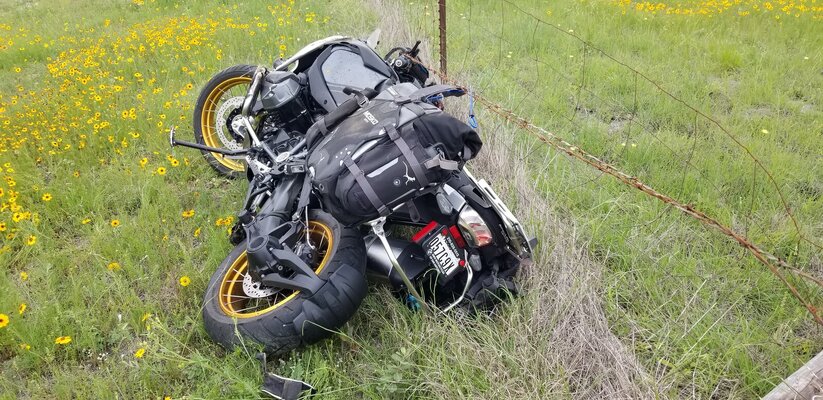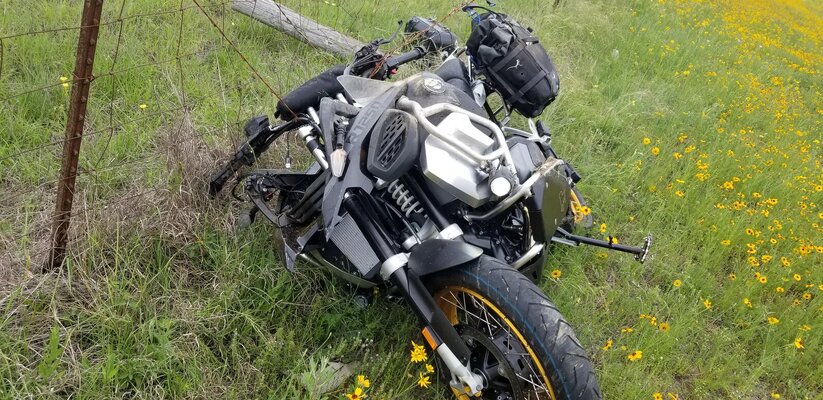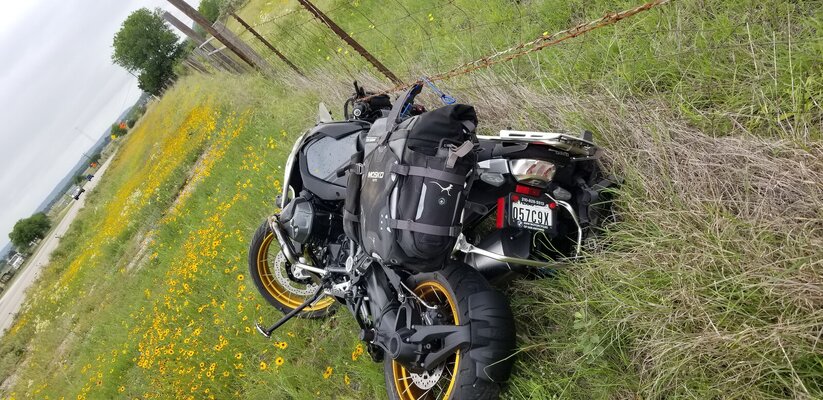As @Tigerkf's quote rightfully pointed out: "if you practice white belt techniques for thirty years, you're still a white belt"! Problem with "practicing" advance riding on public roads is that it requires pushing a rider's limits. There is just no safe way to do that at speed on public roads. Parking lot maneuvers? Sure... all day long. How to snap into a corner entry at higher speeds? Or tighten your turning radius mid-corner... at 40-50mph, beyond what you are comfortable? I wouldn't want to do that in an environment where road hazards could pop up any minute. Instead, do that in a controlled environment, where you have the safety and repetitions to hone those skills. And to build the confidence of knowing what you are capable of, so you can push to your limits when necessary.
The techniques for going slow are essentially the same techniques for going fast. A common phrase heard at track days is that if you want to learn to be fast, you first have to learn to be slow. The physics of how the bike handles is the same. What changes is the amount of time you have to make decisions and to react if something is going wrong. So it is true that some parking lot techniques don't necessarily apply to highway speeds on roads, road speed techniques are the same whether you are going 30 mph or 100 mph. This is what Keith Code emphasizes in the Twist of the Wrist II when he discusses 7 common survival reactions, why they are the WRONG reactions, and what the correct reactions should be. IF you master these reactions at slower speeds, they will apply just as much at faster highway speeds or even racing speeds. It is not that you need different techniques for going faster. Instead, what you need is the ability to be familiar and comfortable with the sensations of going fast so that you are better able to make good judgements in a timely manner.
What is very common among new riders is that they try to go fast before they have learned these basic skills and they end up scaring themselves going into a corner too fast. They panic. They stand up and/or brake. They crash. Or, they are going to fast and have to brake hard, but they have not practiced that at slower speeds. They panic. They GRAB the front brake or STOMP on the back brake. They crash.
Code also talks about how we spend our attention. We only have a limited amount of attention we can devote to processing what is going on around us. Anything demanding our attention comes at a cost. If the costs of all the things demanding attention exceeds our total capacity, then something is being ignored. New users typically haven't learned what needs and doesn't need their attention. Also, they haven't converted things like working the clutch, brakes, and throttle to muscle memory, which reduces the attention needed for these tasks. The end result is they are often running near their max capacity and feel overwhelmed, which makes it easy to make mistakes. Spending time at low speeds, even in a parking lot, to master these basic skills will translate into freeing up attention while riding at higher speeds that can then be used for monitoring the environment, the road, available traction, etc...
All of the above is why I strongly suggest new riders take a track day course as soon as they can. It is not about racing. It is about learning how bikes handle, how your inputs affect the bike, and how to make your inputs work with the bike instead of against the bike. Moreover, being in a controlled environment, it is safer for new riders to be devoting more of their available attention to these basics rather than worrying about traffic, animals, or anything else. Instructors will work with you and help you identify and break bad habits and teach you the proper habits. Most insurance companies will cover bikes at track days so long as you make sure the understand that you are NOT racing, but rather are engaged in closed course instruction. I had USAA and Progressive and both of them covered my bikes for track days. Now, if you start competing, they will NOT cover you.
The other big benefit of a track day is that it gets you relaxed. When you are relaxed, you ride smoother. Smoother is more controlled. Smoother means less panic if something unexpected happens. It means you are already riding somewhat defensively and on smart lines, giving you more time to think and react to the unexpected. In the end, your road speed will likely become faster and safer with less effort. Also, there is something about riding on the track that makes you appreciate the lack of run off areas when riding on the road. I found that while in general I was faster and smoother after doing track days, I ended up not pushing as hard on the street as I had been doing prior to the track days. Also, I have had numerous close call experiences where I was able to negotiate the problem because I was doing what I was trained to do, which kept me from panicking and doing the wrong thing.
Never out ride your line of sight, braking distance, or your headlight. This has saved me on many occasions.
Knowledge of common issues faced by street riders is also important. There is a book by David Hough, Proficient Motorcycling, or something like that. In that book he discussed numerous common issues encountered by street riders, why they are problems, and how to deal with them. The Twist of the Wrist II and Proficient Motorcycling both had a huge impact on my riding. I can't even begin to count the number of times I got into a situation and something from one or both of those books instantly popped into my head and allowed me to do the right thing to avoid the problem. I highly recommend them both. They make excellent bathroom books




 Feel free to hang out and lurk as long as you like. However, we would like to encourage you to
Feel free to hang out and lurk as long as you like. However, we would like to encourage you to 

